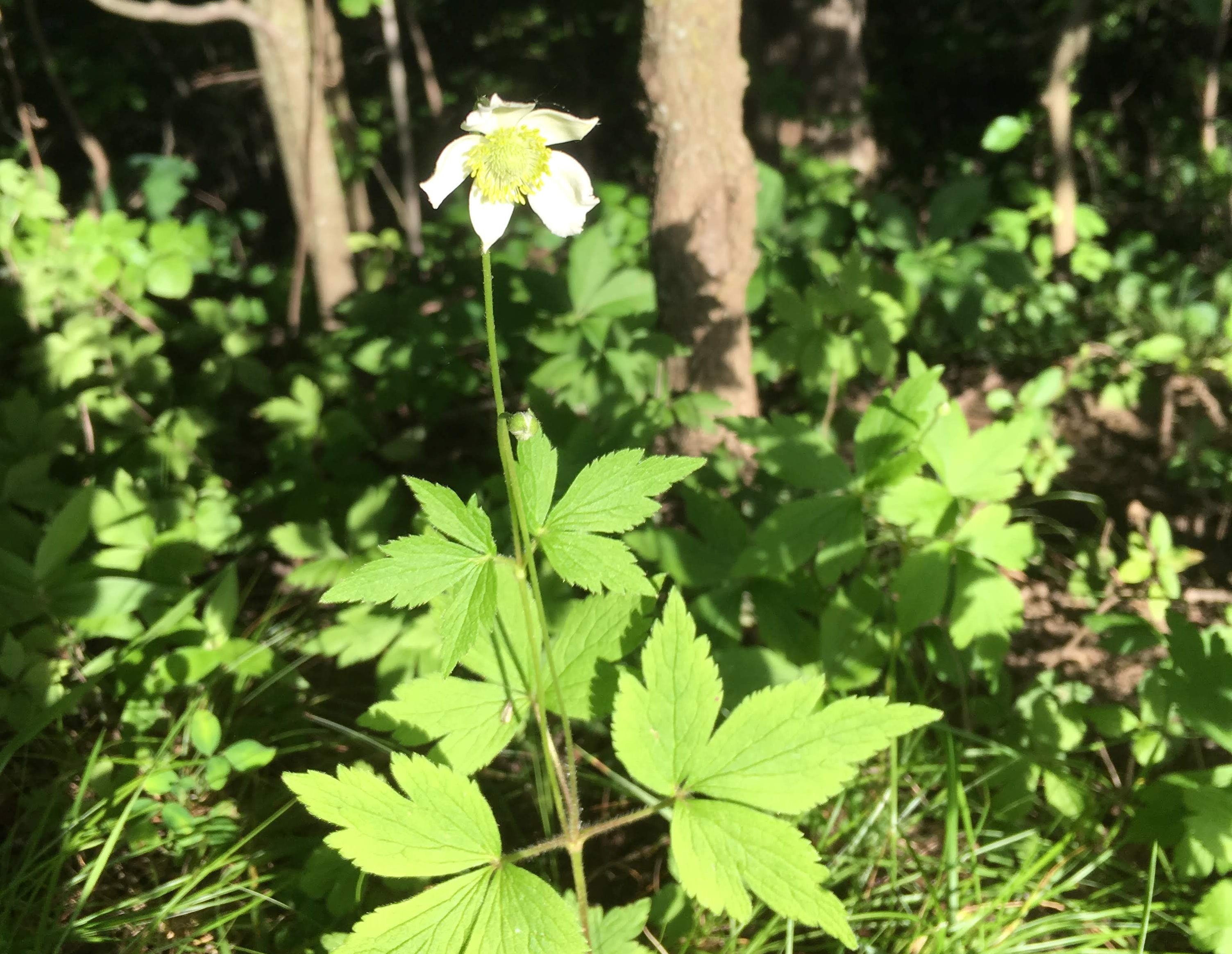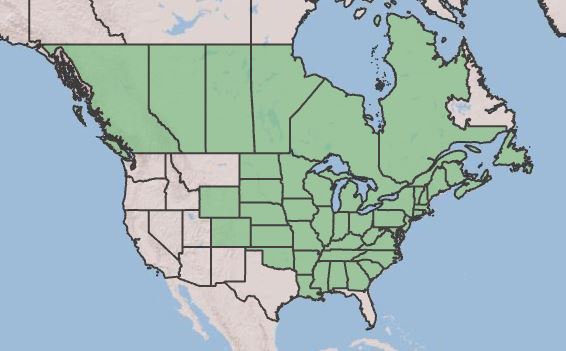Anemone virginiana
| Anemone virginiana | |
|---|---|

| |
| Photo by Jenny Meyer | |
| Scientific classification | |
| Kingdom: | Plantae |
| Division: | Magnoliophyta - Flowering plants |
| Class: | Magnoliopsida - Dicots |
| Order: | Ranunculales |
| Family: | Ranunculaceae |
| Genus: | Anemone |
| Species: | A. virginiana |
| Binomial name | |
| Anemone virginiana L. | |

| |
| Natural range of Anemone virginiana from USDA NRCS Plants Database. | |
Contents
Taxonomic Notes
Varieties: Anemone virginiana Linnaeus var. virginiana.[1] ranges throughout the southeast. Weakley states that a more northern variety, Anemone virginiana Linnaeus var. alba (Oakes) Alph. Wood., "might be expected in n. VA, especially in river scour situations," but the Flora of Virginia does not list var. alba.[2]
Description
Anemone virginiana (common name Thimbleweed or Tall Anemone) is a perennial wildflower in the buttercup family, Ranunculaceae, with a bloom period from May to August and a height of 1-3 feet. "Erect perennial found in rich forests and rocky woodlands, especially on circumneutral soils. Stems solitary, loosely hairy. Leaves basal, and 1-2 whorls of similarly shaped leaves toward top of stem, below the flower scapes; palmately divided into 3- (sometimes 5-) parted, toothed, lance-shaped and hairy segments with purple stalks. Flowers solitary on 2 or more hairy, terminal scapes, white, to 1 1/2 in. wide, with give petal-like sepals encircling a green, bristly, cone-shaped compound ovary and ring of bushy stamens. Fruit a thimble-shaped cluster of brownish achenes." [3]
Distribution
Anemone virginiana is widely distributed throughout the eastern United States and the Midwest, in dry to mesic forests, rocky woodlands, barrens, old fields, and clearings, mainly on moderately to strongly base-rich soils. While common in the mountains and Piedmont, it is infrequent in the Coastal Plain. [4]
Ecology
In the Coastal Plain, Anemone virginiana has been proposed as a calcium-indicator species, providing a reliable means of locating calcareous substrates when the species is located in the field. [5]
In Virginia, Anemone virginiana has been observed in the rare Coastal Plain Dry Calcareous Forests communities (G1, critically imperiled)[6], including at Crow's Nest Natural Area Preserve. [7] Similar forests range from Maryland to South Carolina. [8] In South Carolina, Anemone virginia was observed as part of the calciphile plant communities in the Limestone Cliff-Marl Forest of Old Santee Canal State Park. [9]
Calcareous soils in the Coastal Plain are rare, but do exist in areas containing fossiliferous, calcareous shell deposits, found in geologic formations created during the Tertiary Era. When these formations are close to the surface, or when streams or rivers have down-cut into them, nutrient rich, circumneutral soils develop that favor plant growth and the development of unique calcareous plant communities. [10]
Conservation, cultivation, and restoration
Cultural use
Photo Gallery
References and notes
- ↑ Flora of the Southern and Mid-Atlantic States by Alan S. Weakley and the Southeastern Flora Team, Edition of April 13, 2022, [1]
- ↑ Virginia Botanical Associates. (2022). Digital Atlas of the Virginia Flora [2]. c/o Virginia Botanical Associates, Blacksburg.
- ↑ Cotterman, Laura Mansberg, et al. Wildflowers of the Atlantic Southeast. Timber Press, 2019.
- ↑ Weakley, A. S., Ludwig, J. C., Townsend, J. F., & Crowder, B. (2012). Flora of Virginia. Fort Worth, Tex: Botanical Research Institute of Texas Press.
- ↑ Hill, Steven R. “Calciphiles and Calcareous Habitats of South Carolina.” Castanea, vol. 57, no. 1, 1992, pp. 25–33. JSTOR, http://www.jstor.org/stable/4033847. Accessed 21 May 2022.
- ↑ https://explorer.natureserve.org/Taxon/ELEMENT_GLOBAL.2.689488/Quercus_muehlenbergii_-_Cercis_canadensis_-_Bromus_pubescens_-_Erigeron_pulchellus_var_pulchellus_-_Aquilegia_canadensis_Forest
- ↑ https://www.dcr.virginia.gov/natural-heritage/natural-area-preserves/crowsnest
- ↑ https://www.dcr.virginia.gov/natural-heritage/natural-communities/nctc2
- ↑ Soblo, D. 1989. The vascular flora of Givhans Ferry State Park and Old Santee Canal State Park. Master's Thesis, Clemson University, Clemson S.C.
- ↑ McAvoy, W. A., and J. W. Harrison. 2012. Plant community classification and the flora of Native American shell-middens on the Delmarva Peninsula. The Maryland Naturalist 52(1):1-34.